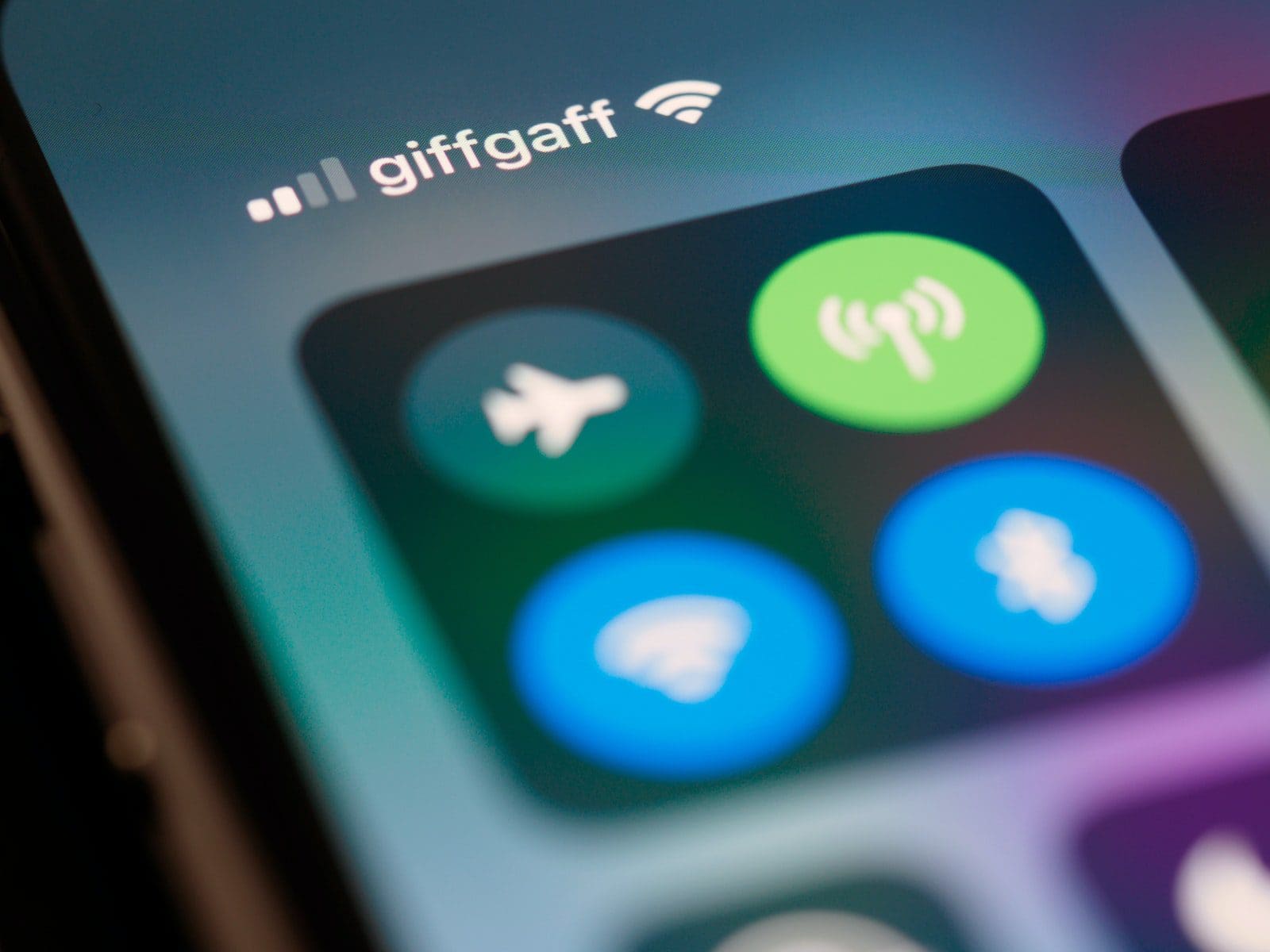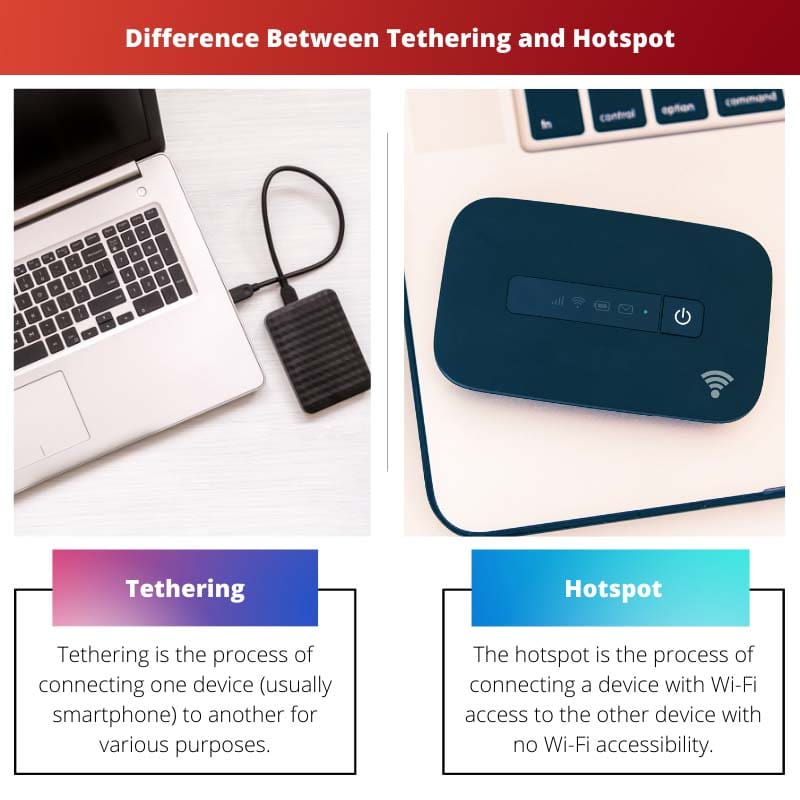Tethering and hotspots are the technical terms used in the context of mobile technology. Tethering is the term used when we connect one device (mobile phone) to other devices, such as laptops, with the help of a USB cable, whereas a Hotspot is a term that is used for connecting one device to another device with the help of Wi-Fi.
Tethering is the broad term for connecting devices via Wi-Fi, Bluetooth, or USB but Hotspot only provides internet access to other devices with the help of Wi-Fi.
Key Takeaways
- Tethering is sharing a device’s internet connection with another device using a wired connection (e.g., USB). At the same time, a hotspot shares a device’s internet connection wirelessly with other devices.
- Tethering supports a single device connection, while a hotspot can support multiple device connections simultaneously.
- Tethering may consume less battery power than a hotspot, as it doesn’t require the device to broadcast a Wi-Fi signal, but it offers greater flexibility and convenience.
Tethering vs Hotspot
Tethering allows the user to share their phone’s internet connection with another device, such as a laptop or tablet, by connecting the devices with a USB cable or Bluetooth. Hotspot allows the user to create a wireless network that other devices can connect to via Wi-Fi allowing for more mobility.

Comparison Table
| Parameters of comparison | Tethering | Hotspot |
|---|---|---|
| Definition | Tethering connects one device (a smartphone) to another for various purposes. This is done with the help of a Data/USB cable, which acts as the modem. | The hotspot is connecting a device with Wi-Fi access to the other device with no Wi-Fi accessibility. This is done to make the internet available to the devices. |
| Uses | Tethering is the most reliable method to connect laptops or any other device to the internet. | Hotspot provides easy accessibility of the internet to multiple devices at a time. |
| Efficiency | Tethering is more efficient because it uses fewer data than hotspots. | The hotspot is inefficient because it uses a lot of data on a device. |
| Internet Connection | Tethering requires a high-speed internet connection. | Hotspot requires medium to intermediate-level internet accessibility. |
| Types | Tethering can be done over via Bluetooth, USB cable, or Wi-Fi. | Hotspot connection works predominantly through Wi-Fi sharing. |
What is Tethering?
Tethering connects one device to another via a USB cable acting as the modem. This is done to provide internet access to the devices.
It is the most convenient method to connect devices for varied purposes. It uses less battery and is comparatively cheaper than other processes.
It can be of three types. These are listed as follows:
- USB Tethering- It is the method of sharing an Internet Connection with the help of a USB cable from one device to another.
- Bluetooth Tethering- This is a method to share data from one device to another with the help of Bluetooth. It is not much in use these days.
- Wi-Fi Tethering is a method to share the internet among devices with the help of Wi-Fi. This method is most popular these days.
There are some advantages to tethering. These are as follows:
- It is a reliable source for sharing Internet connection because it uses less data and battery.
- It is a safe option because it provides a secure connection without public access.

What is Hotspot?
The hotspot is the area with the accessibility of wireless internet connection to the public. This is done to connect one device to the other(s) to get a common and shared accessible internet point.
Hotspots are shared with the help of a Wi-Fi connection. The device which provides the connection is called the modem or the router.
Hotspots are primarily used these days because they can be used to connect multiple devices at the same time. They use more battery and data but can operate with medium or high-speed internet connections.
Using hotspots for internet accessibility is helpful in so many ways. Some of the advantages of using hotspots are mentioned below:
- It provides access to multiple devices at the same time.
- It ensures work continuity because it doesn’t get disconnected easily, even when it has been in use for a long.
- It can work efficiently even with a medium-speed internet connection on the device.
- These are portable wireless connections.

Main Differences Between Tethering and Hotspot
- Tethering is the process of getting access to the internet from one device to another with the help of a USB cable, Bluetooth, or Wi-Fi. In contrast, Hotspot is the process of sharing an internet connection from one device to the other with the help of Wi-Fi.
- Tethering is not readily available to connect multiple devices. To do so, it might require some software, whereas Hotspot can connect multiple devices simultaneously.
- Tethering requires a high-speed internet connection, whereas a hotspot requires a medium to high-speed internet connection.
- Another difference is that about battery usage. Tethering operates with lesser battery consumption, whereas Hotspot consumes more device battery.
- Hotspots are relatively more expensive than the process of tethering.




